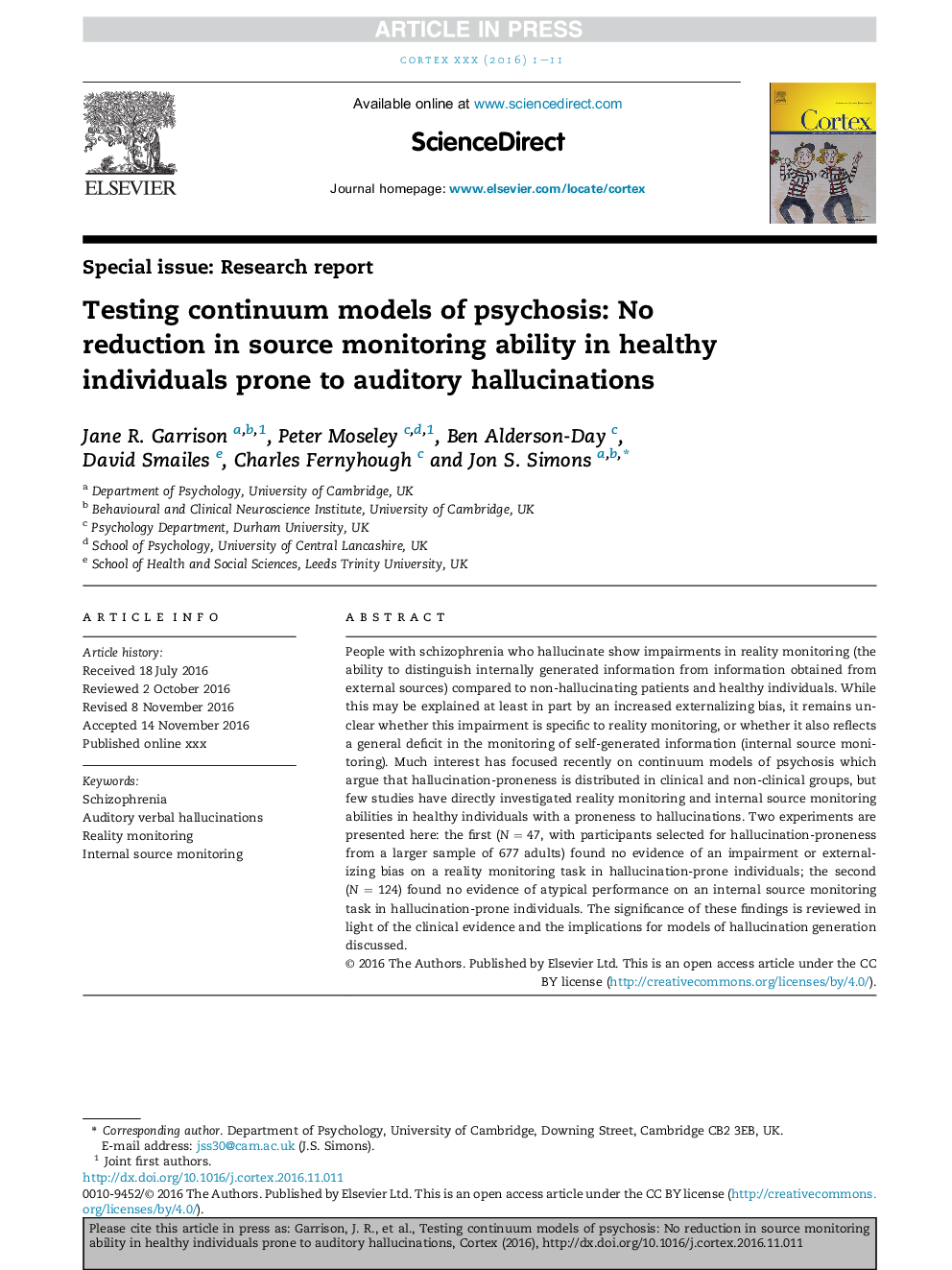ترجمه فارسی عنوان مقاله
تست مدل های پیوسته روان درمانی: بدون کاهش توانایی نظارت بر منبع در افراد سالم که در معرض توهم های شنوایی قرار دارند، کاهش نمی یابد
عنوان انگلیسی
Testing continuum models of psychosis: No reduction in source monitoring ability in healthy individuals prone to auditory hallucinations
| کد مقاله | سال انتشار | تعداد صفحات مقاله انگلیسی |
|---|---|---|
| 120384 | 2017 | 11 صفحه PDF |
منبع

Publisher : Elsevier - Science Direct (الزویر - ساینس دایرکت)
Journal : Cortex, Volume 91, June 2017, Pages 197-207
ترجمه کلمات کلیدی
جنون جوانی، توهم کلامی شنوایی، نظارت بر واقعیت، نظارت بر منبع داخلی،
کلمات کلیدی انگلیسی
Schizophrenia; Auditory verbal hallucinations; Reality monitoring; Internal source monitoring;

